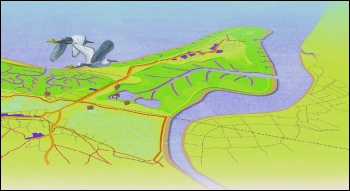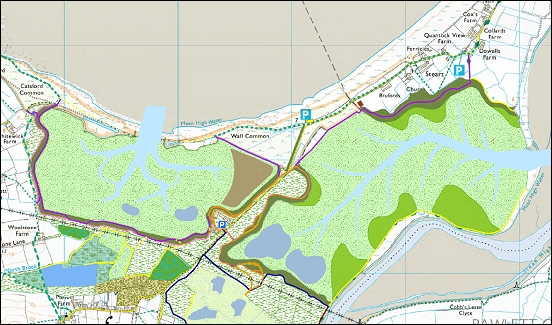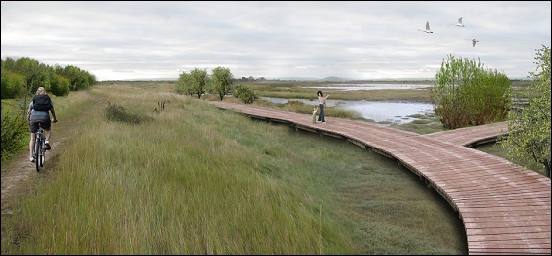A major planning application has been formally submitted by the Environment Agency this week which involves 488 acres of coastline near Burnham-On-Sea being transformed into a huge new wildlife habitat.
The proposals would see a large area of land on the Steart Peninsula being flooded to create a huge new wetlands site, complete with walkways, bridleways and cycle paths for visitors.
The Environment Agency’s planning application has been submitted to Sedgemoor District Council over the past week following a period of consultation in 2011.
The application requests “the construction of wetland habitat comprising intertidal and freshwater areas, accompanied by set-back banks as flood defences, improvements to existing defences, walkways, observation points and hides, car parking and landscaping.”
 The major scheme – which will cost over £20million – will be considered in detail by members of Sedgemoor’s development control committee during the next few months.
The major scheme – which will cost over £20million – will be considered in detail by members of Sedgemoor’s development control committee during the next few months.
The plans have been put forward as a ‘community gain’ after Bristol Port Authority was last year granted planning consent to build a huge new container terminal in Avonmouth to accommodate larger ships.
Constructing the new container terminal will involve reclaiming some of the foreshore on which birds currently feed and roost, therefore the Port has been requested to create new ‘compensatory habitat’ for wetland birds and other wildlife in the Bristol Channel. The port company will be helping to fund the Steart work and also improve flood defences in the area.
The Environment Agency says: “The Environment Agency has to find alternative areas to create habitats to replace those that are being lost through the effects of new ‘hard’ flood defences and rising sea levels. We are combining this with developing measures to manage flood risk around the Severn Estuary. The Steart Peninsula is an area of low-lying agricultural land, with 14 residential properties.”
“The area is at risk of flooding and the existing sea defences offer a low level of flood protection. The area has long been identified as a site where there is potential to realign the sea defences. This would mean moving the flood defences back from their existing position to create a more sustainable way to manage flood risk at the same time as creating important intertidal habitat.”
If the proposals are granted approval, there are hopes that the new habitat will help attract more visitors to the Burnham-On-Sea area, possibly giving a boost to accommodation providers.








